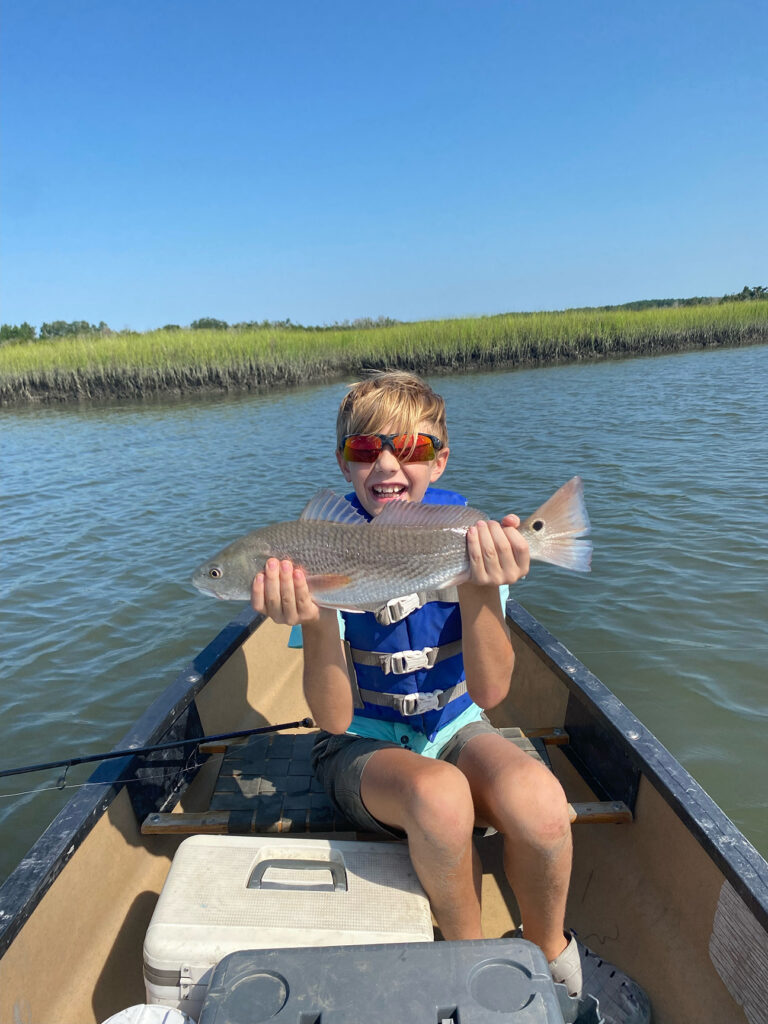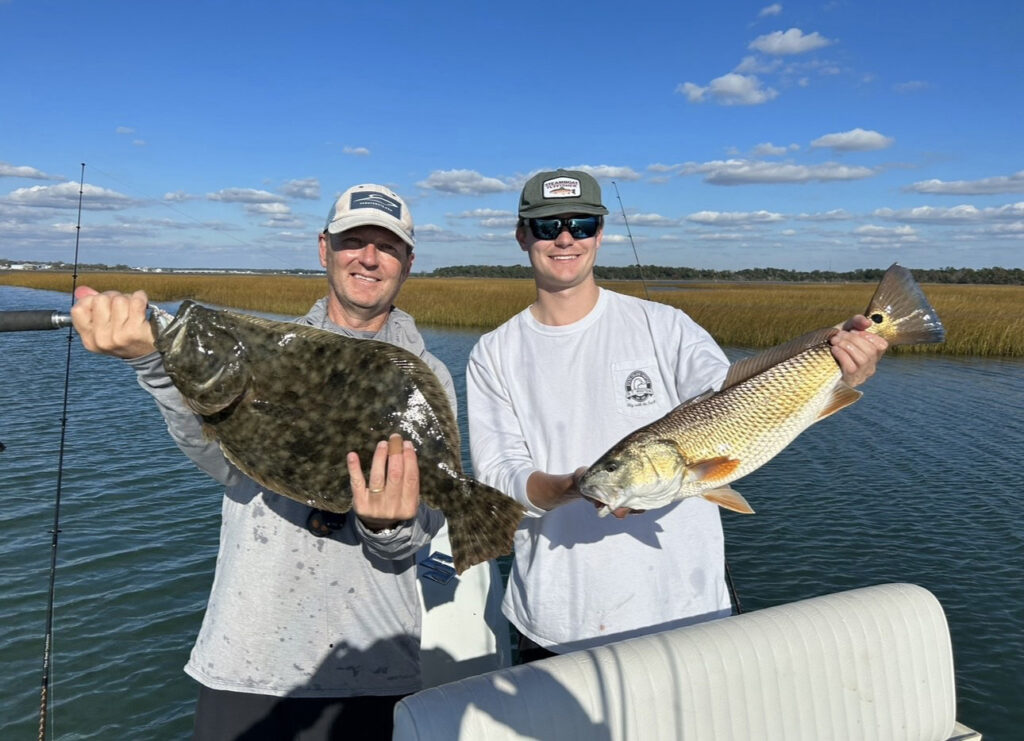Swansboro/Emerald Isle – September 2024
Morgan, of The Reel Outdoors, reports that those out in the surf zone have enjoyed catches of bluefish, spanish mackerel, puppy drum, and black drum.
Inshore, anglers are seeing some good red drum action, especially with all the bait that has poured into the area.
A few speckled trout are starting to show up now that the temperatures are beginning to cool down.
Targeting bridges or other deeper structures is producing plenty of sheepshead.
Nearshore efforts are finding mostly a smaller class of spanish mackerel, with numbers of fish also not very good. This spanish action is predicted to improve dramatically moving into September, as more and larger fish should be moving into the area.
Offshore trips are finding a few wahoo that will bite, along with the occasional sailfish mixed in.
Bottom fishing efforts are producing black sea bass and triggerfish.
Rob, of Sandbar Safari Charters, reports that speckled trout have started to move throughout the area rivers and sound, and they’re feeding on all the finger mullet in the area (and on artificials that imitate all the bait in the area).
Some nice-sized black drum are staged up around structure in the rivers and channels throughout the sound. Target oyster points with shrimp for the best chances of success.
Red drum have been mostly chewing on finger mullet. The best place and time to find them is in the marshes on the rising tide. These periods also see some of the best water conditions, good for both spotting the reds and finding reds that are ready to feed.
The flounder fishing has been ridiculously good, with fish almost everywhere.
On the higher part of the incoming tide, schools of bluefish and spanish mackerel can be found from the inlets to the waterways.

Bennett Hill (age 10), of Jacksonville, NC, found this red drum in a creek off the ICW near Browns Inlet using a Carolina-rigged live finger mullet.
Matt, of Friendly City Fishing Charters, reports that red drum remain the top target. With menhaden being tough to find since Debby passed, finger mullet have been the bait of choice. If the water is a little dirty, then cut mullet fished on Carolina rigs have produced most of the bites. For cleaner water, focus efforts on deeper pockets of water in the marshes, shallow bays, and around structure such as oyster rocks.
Plenty of black drum are staged up around hard structures such as oyster rocks and docks in the White Oak River.
Some trout are in the White Oak as well, and they’re mostly set up around grass points and oyster rocks.
Jacob, of Southern Tides Fishing Charters, reports that anglers are finding plenty of red drum in the area. The redfish seem to be starting a transition phase, as they’ve been scattered out a bit more than in past weeks. This may be due to the arrival of more schools of bait. Mullet on Carolina rigs have been best, especially when bouncing around between docks.
Shrimp fished around oyster bars or in deeper holes have been producing some black drum.
These same bottom-rigged shrimp have also produced a lot of bycatch, including large croakers and pinfish.
Speckled trout have been sticking closer to the inlets where they are able to find saltier water. Live shrimp under a cork has been the best setup.
Lee, of Top Gun Fishing, reports that anglers are seeing a lot of red drum action when targeting deeper holes around the inlets and back along the docks and channels in the ICW. Carolina rigs with live finger mullet are doing the trick in both areas. Most of the time it is moving water, especially outgoing tides, that is producing the better action.
Off the beach, the spanish mackerel are just starting to show back up. Most of the spanish are still a smaller class of summertime fish, though September usually brings the larger ones moving back into the area.
Bluefish are around, both inside and outside the inlets, but overall the bite has been a little slow.
Offshore trips will start to see better numbers of wahoo showing up now that conditions are moving into a cool down pattern.

Jim and Connor Miles, of Cary, NC, caught (and released) this flounder and red drum in a Swansboro marsh using Gulp shrimp on 1/8 oz. jig heads.
John, of Early Riser Fishing Charters, reports that the king mackerel bite has been hit or miss. This sporadic action is actually fairly normal for late summer (before the kings swing into their strong fall patterns). Anglers will have success by keeping on the move and hitting different types of spots and depths until they find an area where some kings ready to feed.
Dead baits tend to do better with the smaller kings (as well as for any mahi around), and then live baits typically work best for the larger kings.
Sailfish are occasionally showing up closer to the beaches.
The wahoo action is picking up as these fish move closer in with the cooling temperatures.
Running out to target bottoms in the 100-140’+ range has the possibility of African pompano this time of year. Focus on the more major structures and wrecks when targeting these hard-fighting and delicious fish.
Mike, of Bogue Inlet Pier, reports that bottom fishing efforts are producing puppy drum (to 3+ lbs.), pompano, bluefish, and a few spots.
The casting action is getting better with this slight cool down in water temperatures, and spanish mackerel (to 2+ lbs.) and bluefish are making up the majority of these catches.
The pier lost a king mackerel the other day, which is hopefully a sign that the kings will be pushing back toward the beachfronts in September.
